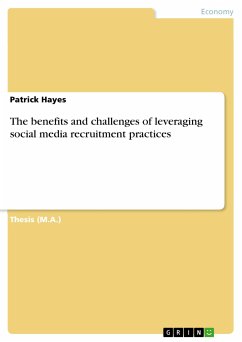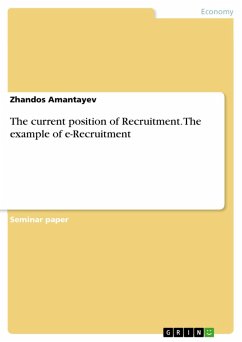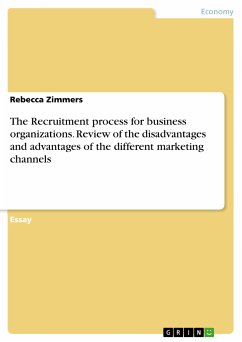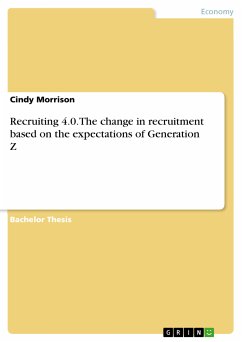Thesis (M.A.) from the year 2012 in the subject Leadership and Human Resources - Miscellaneous, grade: B, University of Limerick, course: MA in Business Management, language: English, abstract: In the last decade labour market shortages and recruitment difficulties have led to a more competitive and challenging recruitment market worldwide. These forces make it more important than ever for recruiting teams in organisations to be effective, efficient and creative in the search for talent. As a response, there is a shift from traditional recruiting methods to a new social recruiting approach. This paper will focus on the differences between traditional and social methods of recruiting, identify the key reasons behind the change and discuss the benefits as well as the potential risks. To measure the success of social recruiting the paper will look at reports from leading social recruiting solution companies and case studies of various sized organisations. This paper concludes that there has been a significant shift in usage from traditional recruiting techniques to social recruiting, that social recruiting is increasingly being used by both large and small organisations and is fast becoming a favoured medium of both employers and job-seekers alike. It also concludes that organisations cannot ignore the importance of creating a social recruitment strategy, owing to its role in improving cost of hire, quality of hire and time to hire. The findings are based on secondary research of academic books, journals, reports and case studies covering the areas of social media, recruitment and Linkedin. The significance of this paper is that it will be a valuable source of information for all organisations looking to leverage social recruiting - and in particular Linkedin's hiring solutions - to start recruiting. The attached literature review as part of this study is also a good starting point for anyone looking to explore the topics of recruitment, social media and Linkedin. Keywords: Social media, Social networking, Recruitment strategy, Linkedin
Dieser Download kann aus rechtlichen Gründen nur mit Rechnungsadresse in A, B, BG, CY, CZ, D, DK, EW, E, FIN, F, GR, HR, H, IRL, I, LT, L, LR, M, NL, PL, P, R, S, SLO, SK ausgeliefert werden.
Hinweis: Dieser Artikel kann nur an eine deutsche Lieferadresse ausgeliefert werden.









